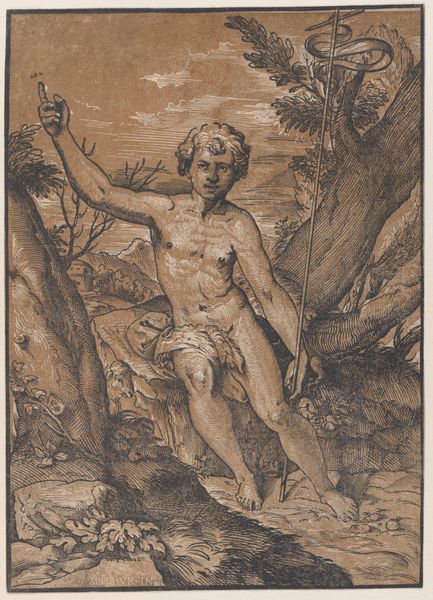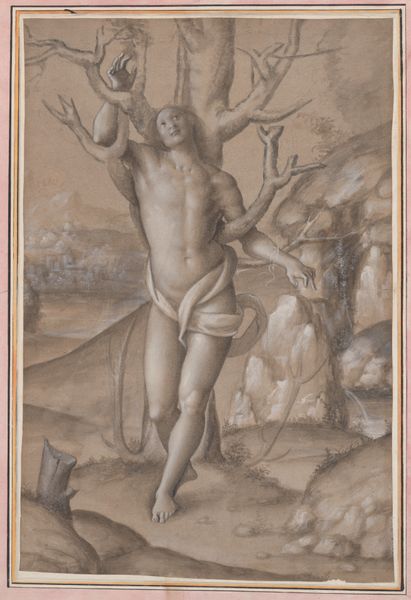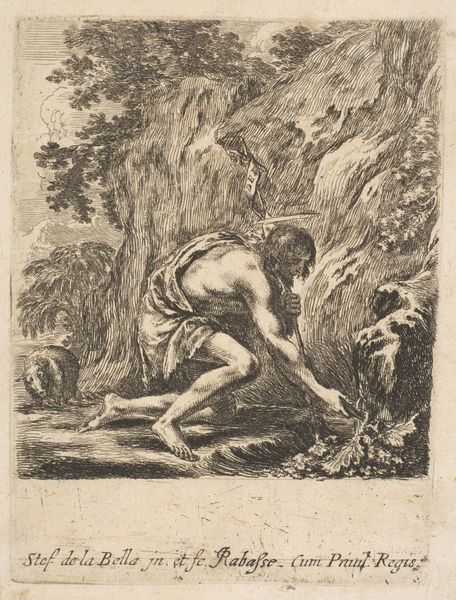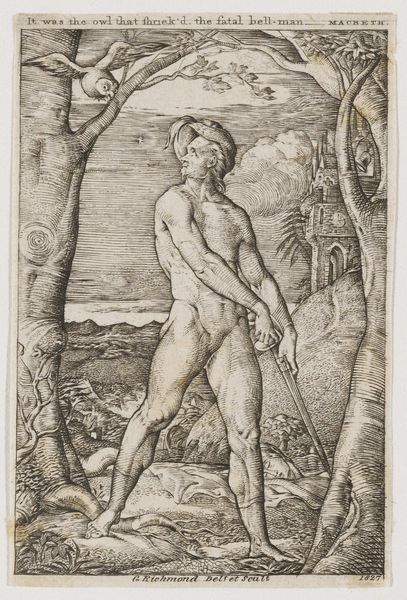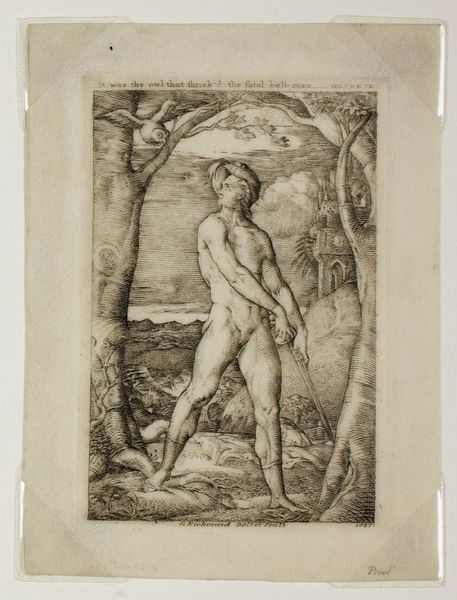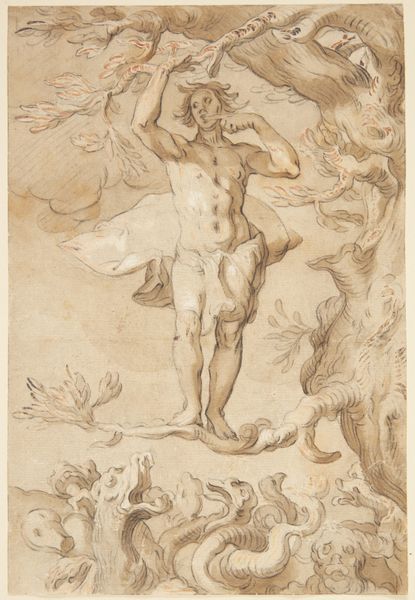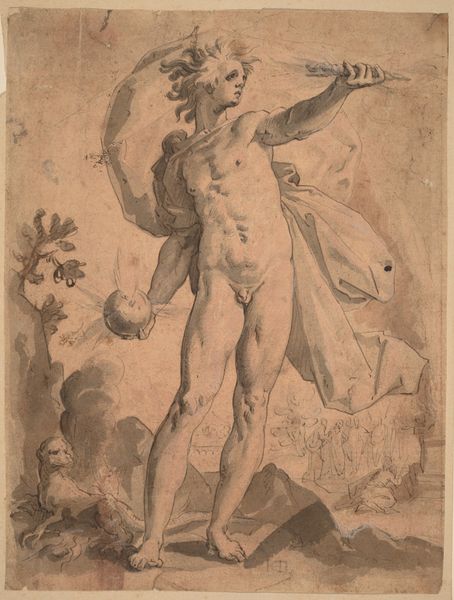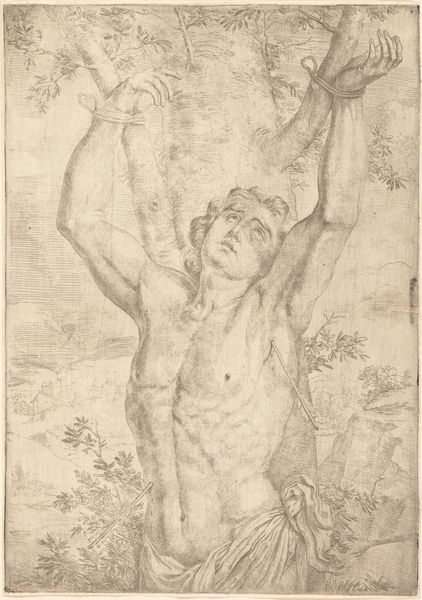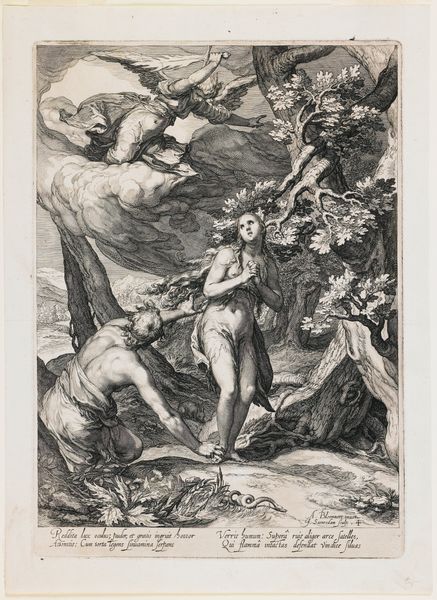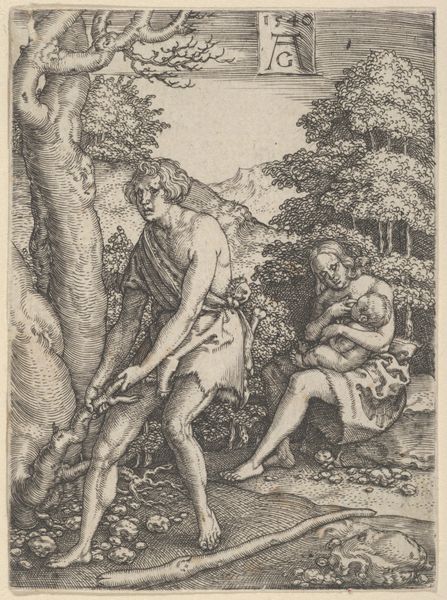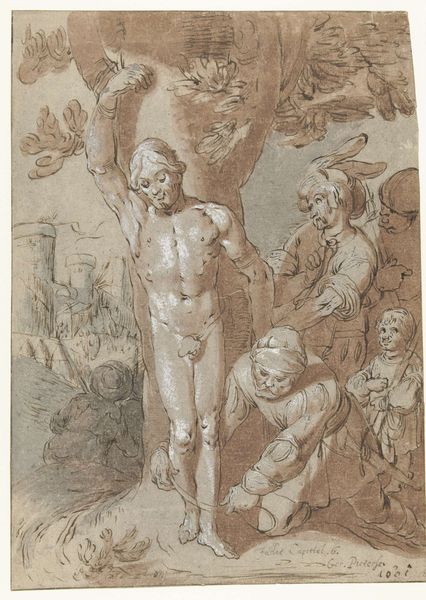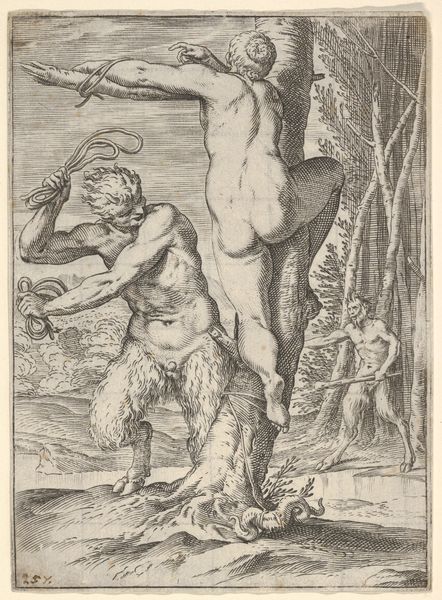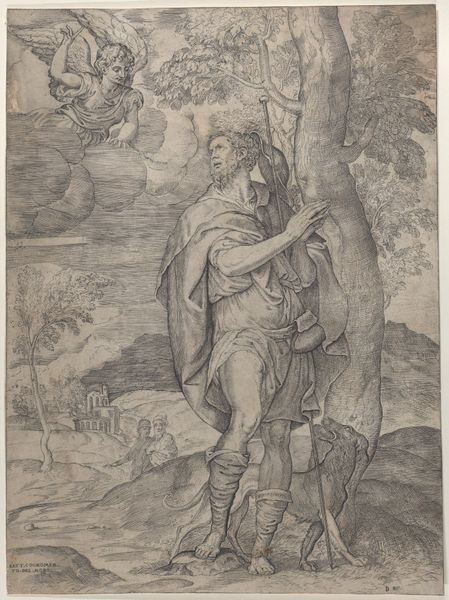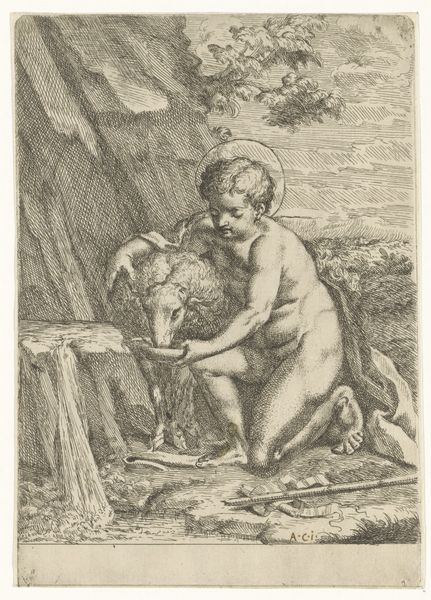
print, engraving
#
portrait
# print
#
landscape
#
figuration
#
italian-renaissance
#
engraving
Dimensions: height 377 mm, width 268 mm
Copyright: Rijks Museum: Open Domain
Ugo da Carpi’s woodcut presents us with John the Baptist in the wilderness, staff in hand, the index finger of his right hand pointing skyward. But, what ancestral memory does this composition awaken? The raised index finger, a gesture laden with meaning, takes us back to ancient times. Here, it signifies divine authority and revelation. One cannot help but recall Plato, who saw the index finger as the "leader" of the hand, a symbol of guidance. This motif reappears through history—from classical oratory to Renaissance art. Consider the serpent entwined around the staff—a potent symbol, seen in Asclepius's rod, emblem of healing and medicine. But in a Christian context, the serpent also evokes the Fall and the promise of redemption. This duality, reflecting our internal conflicts, is part of its enduring appeal. The emotional power lies in the image's ability to trigger subconscious associations, linking us to our past through shared symbols. As we contemplate this image, we are reminded of how symbols persist, revealing the layers of meaning embedded in our collective consciousness.
Comments
No comments
Be the first to comment and join the conversation on the ultimate creative platform.
